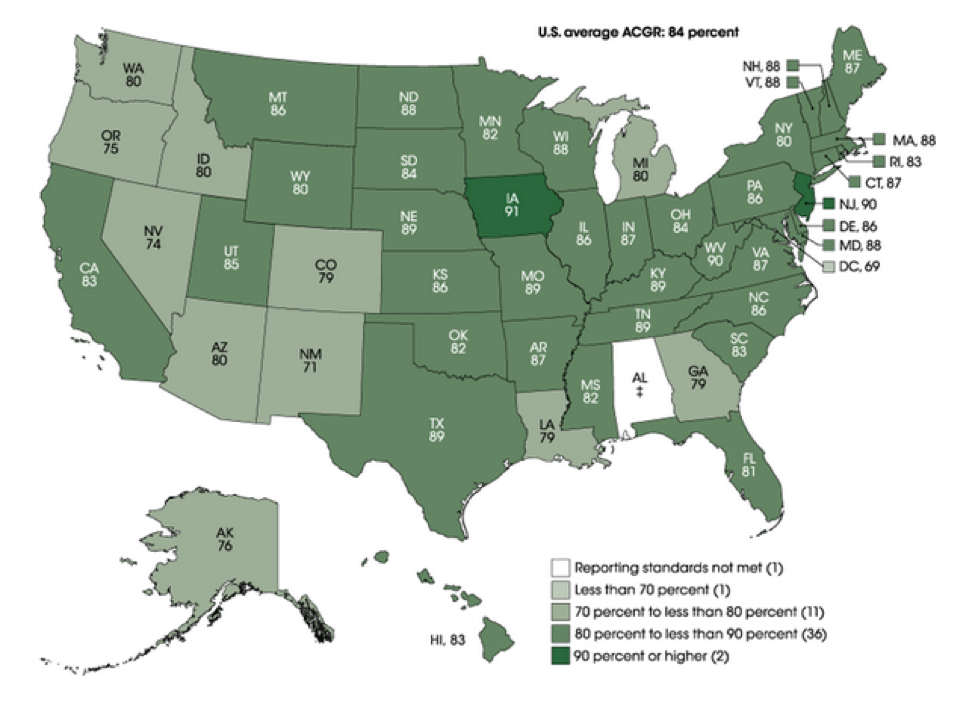Increase Opportunities with Education Savings Accounts
Education Savings Accounts Provide Flexibility for Parents.
Many parents lament the quality of public schools in their area, but feel their children are trapped in those districts. For the 2015–2016 school year, America as a whole boasted a graduation rate of 84 percent, the highest in recent years. While graduation rates are improving, this still means approximately one in six students fails to graduate within four years of entering a public high school. In New Mexico and the District of Columbia, nearly one in three students does not graduate.
Adjusted Cohort Graduation Rate (ACGR) for Public High School Students, by State: 2015–2016

‡ Reporting standards not met*. The Alabama State Department of Education indicated that its ACGR data were misstated. NOTE: The ACGR is the percentage of public high school freshmen who graduate with a regular diploma within 4 years of starting 9th grade. The Bureau of Indian Education and Puerto Rico were not included in the U.S. 4-year ACGR estimate. The graduation rates displayed above have been rounded to whole numbers. Categorizations are based on unrounded percentages.*
Fortunately, some states have implemented a solution: Education Savings Accounts. Education Savings Accounts, or ESAs, allow parents to withdraw their children from public district schools and receive deposits of public funds into government-authorized savings accounts. In the states where they are offered, ESAs can be used to pay for private school tuition, online learning courses, tutoring, and other education-related expenses, vastly increasing the options available to students and parents. With more choices, children’s educations can be tailored to their specific needs.
In 2011, when Arizona enacted the country’s first ESA program, Austin Fox was a sophomore on the verge of dropping out of high school. Austin has Asperger’s, and as his mother Crystal explained, “He wasn’t receiving an education. He was just being moved on.”
Crystal credits the ESA program with “saving Austin’s life.”
When Crystal told Austin that he could choose any school he wanted to attend thanks to his ESA, he was “overjoyed.” After touring several schools, Austin found one that he described as “the perfect fit.” Within just two years, Austin’s grades changed from a C average to straight As, and he graduated with multiple college offers.
“Having a choice is very empowering.”
In Tennessee, seven-year-old Kendall Smith gets specialized educational therapies through her ESA. Her mother Whitney says the ESA has given her the opportunity “to take that money and use it towards what we know as parents would benefit our child, and to put her in an atmosphere that’s really conducive to her growth. Having a choice is very empowering.”
In Florida, concerned mom Stacey uses an ESA to get tailored services for her son’s education, saying, “This program is such a game changer for parents.”
ESAs are currently available in Arizona, Florida, Mississippi, North Carolina, and Tennessee.
*SOURCE: U.S. Department of Education, Office of Elementary and Secondary Education, Consolidated State Performance Report, 2015–16. See Digest of Education Statistics 2017, table 219.46.
Catalyst articles by Ben Wilterdink | Full Biography and Publications
